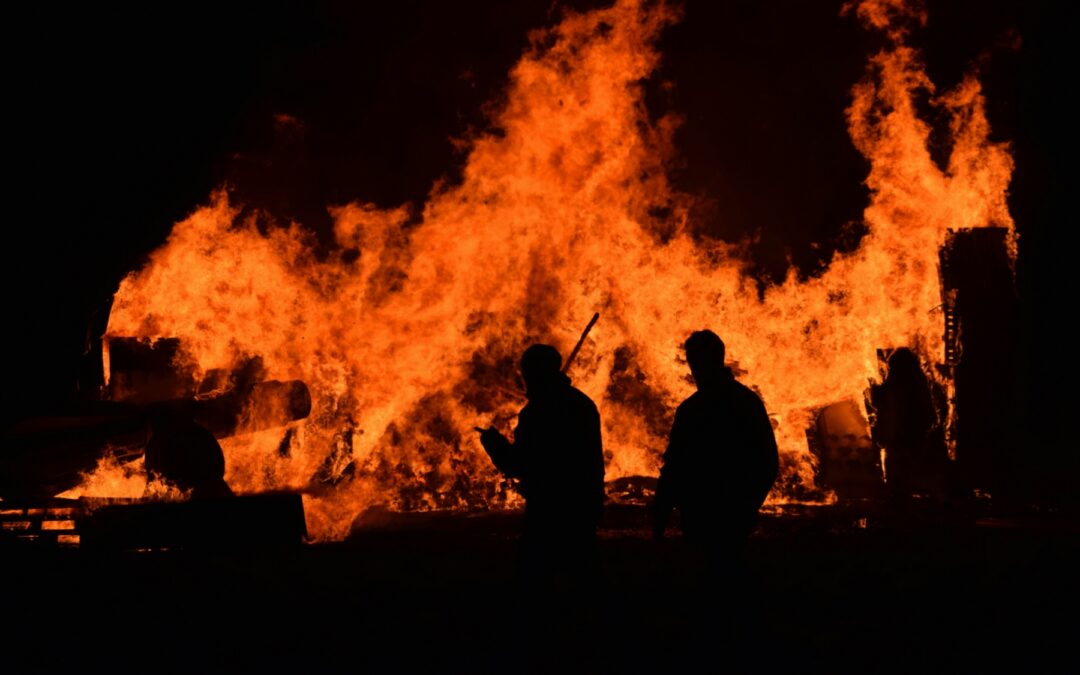What does a lightning strike in a Spanish forest have to do with your next leadership meeting? More than you think.
On June 14, 2014, lightning struck a forest on Spain’s northeast coast, only 60 miles from Barcelona. Within hours, flames 16 to 33 feet high raced out of control toward populated areas, threatening 27,000 acres of forest, an area larger than the city of Boston.
Everything – data, instincts, decades of firefighting doctrine – prioritized saving the entire forest and protecting the coastal towns.
Instead, the fire commanders chose to deliberately let 2,057 acres, roughly the size of Manhattan’s Central Park, burn.
The result? They saved the other 25,000 acres (an area the size of San Francisco), protected the coastal communities, and created a natural firebreak that would protect the region for decades. By accepting some losses, they prevented catastrophic ones.
The Fear Trap That’s Strangling Your Business
The Tivissa fire’s triumph happened because firefighters found the courage to escape what researchers call the “fear trap” – the tendency to focus exclusively on defending against known, measurable risks.
Despite research proving that defending against predictable, measurable risks through defensive strategies consistently fails in uncertain and dynamic scenarios, firefighter “best practices” continue to advocate this approach.
Sound familiar? It should. Most executives today are trapped in exactly this pattern.
We’re in the fire right now. Financial markets are yo-yoing, AI threatens to disrupt everything, and consumer behaviors are shifting.
Most executives are falling into the Fear Trap by doubling down on protecting their existing business and pouring resources into defending against predictable risks. Yet the real threats, the ones you can’t measure or model, continue to pound the business.
While you’re protecting last quarter’s wins, tomorrow’s disruption is spreading unchecked.
Four Principles for Creative Decision-Making Under Fire
The decision to cede certain areas wasn’t hasty but based on four principles enabling leaders in any situation to successfully navigate uncertainty.
PRINCIPLE 1: A Predictable Situation is a Safe Situation. Stop trying to control the uncontrollable. Standard procedures work in predictable situations but fail in unprecedented challenges.
Put it in Practice: Instead of creating endless contingency plans, build flexibility and agility into operations and decision-making.
PRINCIPLE 2: Build Credibility Through Realistic Expectations. Reducing uncertainty requires realism about what can be achieved. Fire commanders mapped out precisely which areas around Tivissa would burn and which would be saved, then communicated these hard truths and the considered trade-offs to officials and communities before implementing their strategy, building trust and preventing panic as the selected areas burned.
Put it in practice: Stop promising to protect everything and set realistic expectations about what you can control. Then communicate priorities, expectations, and trade-offs frequently, transparently, and clearly with all key stakeholders.
PRINCIPLE 3: Include the future in your definition of success: Traditional firefighting protects immediate assets at risk. The Tivissa firefighters expanded this to include future resilience, recognizing that saving everything today could jeopardize the region tomorrow.
Put it in practice: Be transparent about how you define the Common Good in your organization, then reinforce it by making hard choices about where to compete and where to retreat. The goal isn’t to avoid all losses – it’s to maximize overall organizational health.
PRINCIPLE 4: Use uncertainty to build for tomorrow: Firefighters didn’t just accept that 2,057 acres would burn – they strategically chose which acres to let burn to create maximum future advantage, protecting the region for generations.
Put it in practice: Evaluate every response to uncertainty on whether it better positions you for future challenges. Leverage the disruption to build capabilities, market positions, and organizational structures that strengthen you for future uncertainty.
Your Next Move
When the wind shifted and the fire exploded, firefighters had to choose between defending everything (and likely losing it all) or accepting strategic losses to ensure overall wins.
You’re facing the same choice right now.
Like the firefighters, your breakthrough might come not from fighting harder against uncertainty, but from learning to work with it strategically.
What are you willing to let burn to save what matters most?
